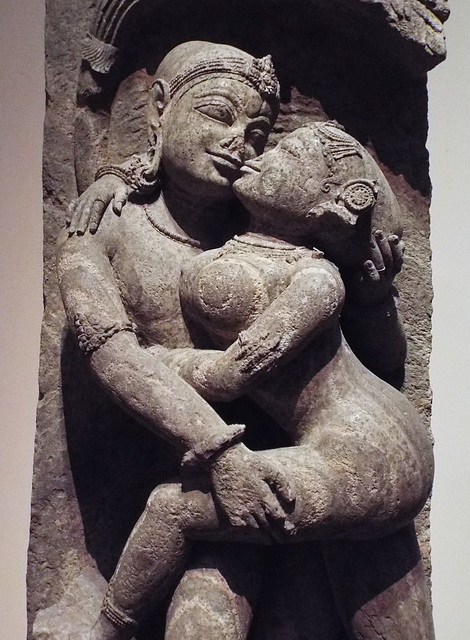Ming Dynasty Vase with Rabbits in the Metropolitan…
Ming Dynasty Vase with Rabbits in the Metropolitan…
Detail of the Ming Dynasty Vase with Rabbits in th…
Detail of the Ming Dynasty Vase with Rabbits in th…
Lofty Scholar among Streams and Mountains Hanging…
Lofty Scholar among Streams and Mountains Hanging…
Detail of the Lofty Scholar among Streams and Moun…
Detail of the Lofty Scholar among Streams and Moun…
Jade Figurines of an Elephant Carrying a Vase and…
Jade Figurines of an Elephant Carrying a Vase and…
Tang Dynasty Figure of a Seated Court Lady in the…
Tang Dynasty Figure of a Seated Court Lady in the…
Tripod Incense Burner in the Metropolitan Museum o…
Tripod Incense Burner in the Metropolitan Museum o…
Detail of the Tripod Incense Burner in the Metropo…
Detail of the Tripod Incense Burner in the Metropo…
Jar with a Dragon in the Metropolitan Museum of Ar…
Jar with a Dragon in the Metropolitan Museum of Ar…
Guardian Deity from Cambodia in the Metropolitan M…
Guardian Deity from Cambodia in the Metropolitan M…
Vase with European Women and Children in the Metro…
Vase with European Women and Children in the Metro…
Detail of a Vase with European Women and Children…
Detail of the Loving Couple in the Metropolitan Mu…
Loving Couple in the Metropolitan Museum of Art, A…
Loving Couple in the Metropolitan Museum of Art, A…
Preening Celestial Beauty in the Metropolitan Muse…
Preening Celestial Beauty in the Metropolitan Muse…
Juan de Pareja by Velazquez in the Metropolitan Mu…
Juan de Pareja by Velazquez in the Metropolitan Mu…
Pretty Eagle from the 1880 Crow Peace Delegation b…
Pretty Eagle from the 1880 Crow Peace Delegation b…
Pretty Eagle from the 1880 Crow Peace Delegation b…
Pretty Eagle from the 1880 Crow Peace Delegation b…
Super Diva by Julie Torres in the Metropolitan Mus…
Super Diva by Julie Torres in the Metropolitan Mus…
Detail of Inferno by Von Stuck in the Metropolitan…
Detail of Inferno by Von Stuck in the Metropolitan…
Detail of Inferno by Von Stuck in the Metropolitan…
Detail of Inferno by Von Stuck in the Metropolitan…
Detail of Inferno by Von Stuck in the Metropolitan…
Detail of Inferno by Von Stuck in the Metropolitan…
Detail of Inferno by Von Stuck in the Metropolitan…
Detail of Inferno by Von Stuck in the Metropolitan…
Inferno by Von Stuck in the Metropolitan Museum of…
See also...
Keywords
Authorizations, license
-
Visible by: Everyone -
All rights reserved
-
33 visits
Detail of the Loving Couple in the Metropolitan Museum of Art, August 2023


Title: Loving Couple (Mithuna)
Period: Eastern Ganga dynasty
Date: 13th century
Culture: India (Orissa)
Medium: Ferruginous stone
Dimensions: H. 72 in. (182.9 cm)
Classification: Sculpture
Credit Line: Purchase, Florance Waterbury Bequest, 1970
Accession Number: 1970.44
A Hindu temple was often envisioned as the world's central axis, in the form of a mountain inhabited by a god. The temple itself was therefore worshipped. This was done by circumambulation (walking around the exterior, in this case in a counterclockwise direction) and by viewing its small inner sanctum. The outside of the temple was usually covered with myriad reliefs: some portrayed aspects of the god within or related deities; others represented the mountain's mythological inhabitants. From early times, iconic representations of deities and holy figures were augmented by auspicious images, such as beautiful women, musicians, and loving couples (mithunas). Once part of the subsidiary decoration of a temple facade, the figures of this bejeweled couple embrace while peering rapturously into each other's eyes. Their full bodies and broad, detailed features are characteristic of architectural sculptures produced in thirteenth-century Orissa, a region in northeast India that was noted for its temples, particularly those built from the tenth through the thirteenth century, often distinguished by figures in astonishingly acrobatic and erotic poses. Couples such as this pair are understood to have multiple meanings, ranging from an obvious celebration of life's pleasures to the more metaphorical symbolism of a human soul's longing for union with the divine.
Text from: www.metmuseum.org/art/collection/search/38141
Period: Eastern Ganga dynasty
Date: 13th century
Culture: India (Orissa)
Medium: Ferruginous stone
Dimensions: H. 72 in. (182.9 cm)
Classification: Sculpture
Credit Line: Purchase, Florance Waterbury Bequest, 1970
Accession Number: 1970.44
A Hindu temple was often envisioned as the world's central axis, in the form of a mountain inhabited by a god. The temple itself was therefore worshipped. This was done by circumambulation (walking around the exterior, in this case in a counterclockwise direction) and by viewing its small inner sanctum. The outside of the temple was usually covered with myriad reliefs: some portrayed aspects of the god within or related deities; others represented the mountain's mythological inhabitants. From early times, iconic representations of deities and holy figures were augmented by auspicious images, such as beautiful women, musicians, and loving couples (mithunas). Once part of the subsidiary decoration of a temple facade, the figures of this bejeweled couple embrace while peering rapturously into each other's eyes. Their full bodies and broad, detailed features are characteristic of architectural sculptures produced in thirteenth-century Orissa, a region in northeast India that was noted for its temples, particularly those built from the tenth through the thirteenth century, often distinguished by figures in astonishingly acrobatic and erotic poses. Couples such as this pair are understood to have multiple meanings, ranging from an obvious celebration of life's pleasures to the more metaphorical symbolism of a human soul's longing for union with the divine.
Text from: www.metmuseum.org/art/collection/search/38141
- Keyboard shortcuts:
Jump to top
RSS feed- Latest comments - Subscribe to the comment feeds of this photo
- ipernity © 2007-2025
- Help & Contact
|
Club news
|
About ipernity
|
History |
ipernity Club & Prices |
Guide of good conduct
Donate | Group guidelines | Privacy policy | Terms of use | Statutes | In memoria -
Facebook
Twitter

Sign-in to write a comment.